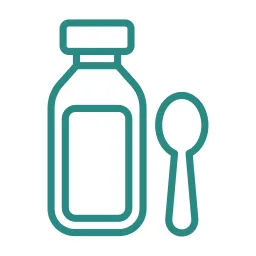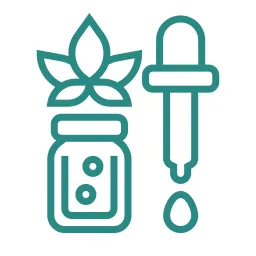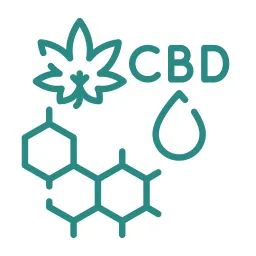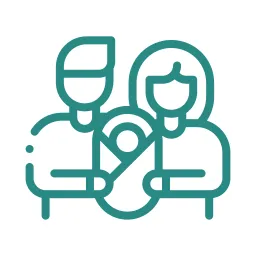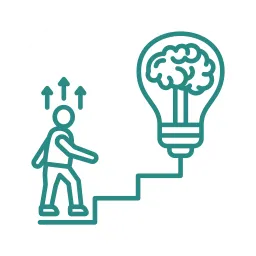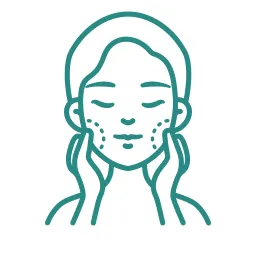Ever found yourself breathless after just a short walk or felt a peculiar tightness in your chest while relaxing? While these might seem like fleeting moments of fatigue or stress, they could hint at a deeper underlying issue related to your heart’s health. Heart disease, a term encompassing a spectrum of conditions, is silently making its presence known in countless lives globally.
Your heart has stories to share. Join us as we unfold the chapters of heart disease, one fact at a time.
What is Heart Disease?
Heart disease refers to various conditions impacting the heart’s structure or function1. These can arise from issues with the heart muscle itself, the valves, the rhythm, or the blood vessels supplying the heart.
Types of Heart Disease
According to the World Health Organization, heart diseases account for an estimated 17.9 million deaths each year, representing 31% of global mortality. This alarming statistic underlines the various types:
Coronary Artery Disease (CAD)
Often termed as the most common heart problem2, CAD occurs when the coronary arteries, responsible for supplying blood to the heart muscle, become narrowed or blocked. This happens due to a buildup of cholesterol and fatty deposits, called plaques. As plaques accumulate, they can limit or obstruct blood flow, potentially leading to angina (chest pain) or a heart attack.
Heart Failure
Despite its alarming name, heart failure doesn’t signify the heart’s cessation. Instead, it points to the heart’s inefficiency in pumping blood to meet the body’s needs. This can arise from several underlying conditions, including CAD and high blood pressure, and may result in symptoms like shortness of breath, fluid retention, and fatigue.
Arrhythmias
Arrhythmias represent abnormalities in the heart’s rhythm. This can entail beats that are too fast, too slow, or irregular. While some arrhythmias are benign, others can be life-threatening. The most common types include atrial fibrillation, which is a rapid and irregular heartbeat, tachycardia (fast heartbeat), and bradycardia (slow heartbeat)3.
Valvular Heart Diseases
Affecting any of the four heart valves, these diseases are characterized by malfunctioning valves that don’t open or close properly. Conditions such as aortic stenosis (narrowing of the aortic valve), mitral regurgitation (leakage of the mitral valve), or mitral valve prolapse (bulging of the mitral valve) can disrupt the blood flow within the heart and to the rest of the body.
Symptoms of Heart Disease
Recognizing the signs and symptoms of heart disease is the first step in seeking timely intervention. This section provides a concise breakdown of the typical symptoms associated with heart conditions.
Coronary Artery Disease (CAD)
Patients with CAD may experience:
- Chest pain or discomfort (often described as aching, tightness, or pressure)
- Shortness of breath
- Fatigue with exertion
Many individuals with CAD often don’t realize they have it until a major symptom like a heart attack occurs.
Heart Failure
Symptoms of heart failure can include:
- Persistent coughing or wheezing
- Swelling in feet, ankles, legs, or stomach
- Shortness of breath, even at rest
- Rapid weight gain
Heart failure contributes to 1 in 8 deaths in the United States.
Arrhythmias
Depending on the type, arrhythmias may lead to:
- Fluttering in the chest
- A racing heartbeat (tachycardia)
- A slow heartbeat (bradycardia)
- Dizziness or fainting
While some arrhythmias may have no noticeable symptoms, others can be life-threatening if not promptly addressed.
Valvular Heart Diseases
People with valvular issues might experience:
- Fatigue
- Shortness of breath
- Swollen ankles or feet
- Irregular heartbeat
Valvular heart disease, if left untreated, can lead to heart failure.
The body has its ways of signaling when something is amiss with the heart. By staying informed about these symptoms and seeking medical advice when they manifest, individuals can play an active role in safeguarding their cardiovascular health. The earlier the detection, the better the chances of successful management and treatment.

Causes
Understanding the root causes of heart disease is essential for prevention and treatment. This section offers a succinct overview of the common causes behind the major types of heart conditions.
Coronary Artery Disease (CAD)
CAD primarily arises from atherosclerosis, a process in which cholesterol-rich plaques build up in coronary arteries4. Over time, these plaques can:
- Narrow the arteries
- Limit blood flow to the heart
- Lead to blood clots
The World Health Organization (WHO) states that atherosclerosis starts early in life, making early lifestyle interventions crucial.
Heart Failure
Heart failure can be a consequence of many factors, including:
- CAD and heart attacks
- High blood pressure5
- Faulty heart valves
- Chronic diseases like diabetes or obesity
Heart failure can develop after other conditions have damaged or weakened the heart over time.
Arrhythmias
Arrhythmias can originate from various conditions:
- Heart defects from birth
- High blood pressure
- Diabetes
- Smoking or excessive caffeine/alcohol consumption
An institute notes that while some people might not have an identifiable cause for their arrhythmia, certain triggers can exacerbate it.
Valvular Heart Diseases
The causes of valvular heart diseases can range from congenital defects (present at birth) to acquired ones later in life due to:
- Age-related degeneration
- Rheumatic fever
- Infections
The importance of regular check-ups to detect and address valvular issues before they become severe.
Identifying the causes of heart diseases equips us with the knowledge to adopt preventive strategies and seek early interventions.
Risk Factors
Here are some pivotal risk factors that play a role in determining an individual’s vulnerability to heart disease.
Lifestyle Choices
The way we live our daily lives can significantly impact our heart health:
- Smoking: According to the World Health Organization (WHO), tobacco use is a leading cause of cardiovascular disease.
- Diet: High intake of saturated fats, trans fats, and cholesterol can elevate heart disease risk.
- Physical Inactivity: The sedentary behavior can enhance one’s chances of developing heart problems.
Medical Conditions
Certain conditions can escalate the risk of heart disease:
- High Blood Pressure: Persistent elevated blood pressure can strain the heart and damage arteries.
- High Cholesterol: Excess cholesterol can lead to plaque buildup in arteries.
- Diabetes: People with diabetes are more likely to develop heart disease than those without it.
Non-modifiable Risk Factors
Certain intrinsic factors can influence heart disease susceptibility:
- Age: Older individuals typically have a higher risk.
- Gender: Men often have a greater risk at a younger age, while post-menopausal women see an increase in risk.
- Family History: Genetics can play a part, making some predisposed based on their lineage6.
Environmental and Socioeconomic Factors
Outside factors can also impact heart health:
- Stress: Chronic stress might contribute to heart disease.
- Socioeconomic Status: Lower socioeconomic groups often have higher risks due to various factors, including limited access to healthcare and healthful foods.
Recognizing risk factors, both within our control and beyond it, underlines the importance of regular medical check-ups, healthy lifestyle choices, and being aware of our family history.

Triggers for Heart Diseases
While risk factors can predispose an individual to heart disease, certain triggers can exacerbate or initiate a cardiac event. Recognizing these can be crucial for avoiding potential dangers.
Physical Exertion
Sudden Activity: Suddenly undertaking intense physical activity when the body isn’t accustomed can strain the heart. An abrupt increase in physical activity, especially without a proper warm-up, can be a trigger for heart events in vulnerable individuals.
Emotional Stressors
Acute Emotional Events: Sudden or intense emotional stress, such as from grief or anger, can prompt heart issues. There’s a documented phenomenon called “broken heart syndrome” (takotsubo cardiomyopathy) where heart dysfunction is precipitated by acute emotional stress.
External Stimulants
Drugs and Stimulants: Certain substances, both legal and illegal, can be triggers:
- Caffeine: In excess, it can lead to heart palpitations or arrhythmias.
- Cocaine and Methamphetamines: These can lead to coronary artery spasms or heart attack.
Dietary Triggers
Food and Drink: Specific foods or excessive consumption can precipitate heart issues:
- High-sodium foods: Can lead to high blood pressure, a major risk factor for heart disease.
- Excessive Alcohol: Binge drinking can lead to arrhythmias and other heart complications.
Awareness of these triggers, especially in those already at risk, can mean the difference between a regular day and a medical emergency.
Diagnosis
A timely diagnosis of heart disease can be life-saving. Here’s a straightforward breakdown of the diagnostic process to understand heart health better.
Medical History and Physical Examination
A primary step in diagnosing heart conditions involves a thorough discussion about symptoms, lifestyle, and family history of heart diseases7. The doctor will also perform a physical examination, listening to the heart with a stethoscope to detect any irregularities.
Diagnostic Tests
Electrocardiogram (ECG or EKG)
This test records the electrical activity of the heart and can reveal disturbances in heart rhythm or structure. An ECG can help diagnose many cardiac conditions, from arrhythmias to heart attacks.
Echocardiogram
Utilizing sound waves to create detailed pictures of the heart, an echocardiogram provides insights into the heart’s function and structure, highlighting issues like thickened heart muscles or damaged heart valves.
Stress Test
Under monitored conditions, patients are subjected to physical stress, usually through treadmill exercise. This test assesses how the heart performs under strain and can point out reduced blood flow to the heart, indicative of conditions like coronary artery disease.
Advanced Imaging
Magnetic Resonance Imaging (MRI)
Cardiac MRI offers detailed images of the heart and its blood vessels. This can help in diagnosing structural heart diseases, tumors, or complications arising from heart attacks.
Coronary Angiography
This procedure involves injecting a contrast dye into the coronary arteries via a catheter. Using X-rays, doctors can then observe blood flow in the heart and detect blockages, if any.
Blood Tests
Biomarker Analysis
Certain proteins or enzymes released during heart damage can be detected in blood samples. These biomarkers, such as troponin, can be indicative of events like heart attacks.
A precise diagnosis is foundational to the effective treatment of heart diseases. Advances in medical technology and an array of diagnostic tools ensure that doctors can identify, assess, and address heart ailments with increasing accuracy and speed.
Treatment
Treating heart disease involves a combination of medical interventions and lifestyle adjustments.
Lifestyle Changes
Dietary Adjustments
Eating heart-healthy foods, reducing salt, and eliminating trans fats are foundational steps. A diet rich in vegetables, fruits, lean proteins, and whole grains is recommendable.
Physical Activity
Regular exercise can help strengthen the heart and improve circulation. A moderate-intensity workout, like brisk walking for at least 30 minutes most days, is generally advised.
Weight Management
Maintaining a healthy weight reduces the risk of developing other conditions that can strain the heart, such as diabetes, high blood pressure, and high cholesterol.
Medications
Blood Thinners
These reduce the risk of blood clots, a major cause of heart attacks and strokes.
Beta Blockers
Used after heart attacks, they help reduce blood pressure and heart rate.
Statins
These drugs lower cholesterol levels, reducing the risk of plaque formation in arteries.
Calcium Channel Blockers
They help relax and widen blood vessels, improving blood flow to the heart muscles.
Medical Procedures or Surgery
Angioplasty and Stent Placement
By threading a catheter with a balloon, narrowed heart arteries can be widened. A stent is then often placed to keep the artery open.
Bypass Surgery
This redirects blood around clogged arteries, ensuring the heart receives enough blood.
Heart Valve Surgery
Damaged heart valves are repaired or replaced to ensure efficient blood flow.
Pacemaker Installation
A device is placed in the chest to control abnormal heart rhythms.
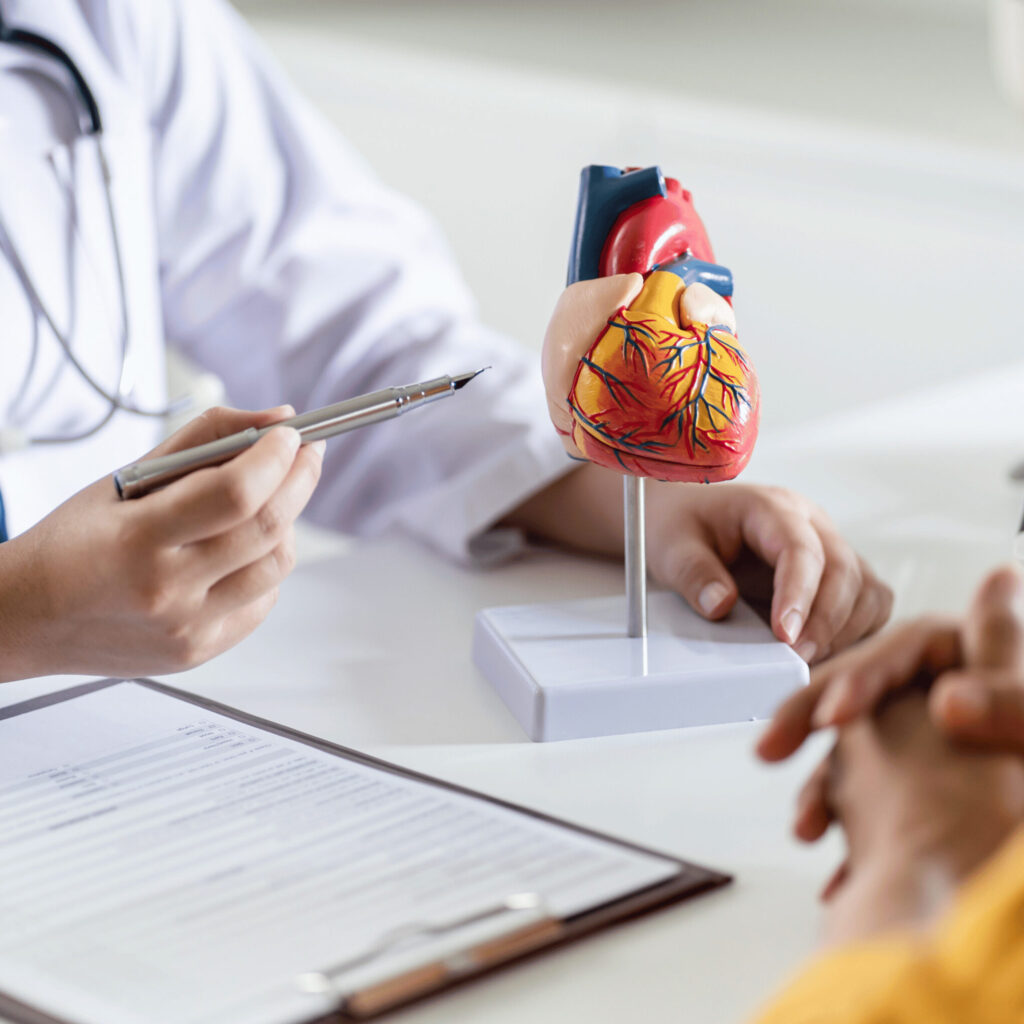
Complications
Heart diseases, if not managed timely, can lead to a myriad of complications, some of which can be life-threatening. In this section, we delve into the common complications associated with heart disease.
Heart Failure
Heart diseases can strain and damage the heart muscle over time, rendering it less effective in pumping blood to meet the body’s needs.
Heart Attack
Caused by a blocked coronary artery or a sudden spasm of an artery, heart attacks can damage the heart muscle permanently.
Stroke
Certain heart conditions, like atrial fibrillation, can result in blood clots. If these clots travel to the brain, they can block an artery and cause a stroke.
Aneurysm
The weakening of an artery wall can lead to its bulging and might rupture, causing life-threatening internal bleeding.
Peripheral Artery Disease
When fatty deposits build up in the artery walls, it can reduce blood flow to the limbs, usually the legs, causing symptoms like pain or numbness.
Sudden Cardiac Arrest
Distinct from a heart attack, sudden cardiac arrest occurs when the heart’s electrical system malfunctions, stopping its ability to pump blood. It requires immediate medical attention.
Heart diseases can lead to a cascade of complications, accentuating the importance of early detection, consistent treatment, and preventive measures. Being vigilant about one’s cardiovascular health can go a long way in preventing these potentially severe outcomes, and safeguarding overall well-being.
Prevention of Heart Diseases
Preventing heart disease is achievable through informed choices and regular health checks.
Healthy Diet
Incorporate more fruits, vegetables, whole grains, and lean proteins. Minimize intake of saturated fats, trans fats, cholesterol, salt, and added sugars.
Regular Physical Activity
Engage in at least 150 minutes of moderate-intensity aerobic exercise or 75 minutes of vigorous exercise weekly. Activities like brisk walking, swimming, or cycling can prove beneficial.
Maintain a Healthy Weight
Determine your ideal weight range and work towards staying within it. Regular exercise and a balanced diet are instrumental in achieving this goal.
Regular Health Screenings
Routine checks of blood pressure, cholesterol levels, and blood sugar can identify risk factors early. Based on the results, timely interventions can be planned.
Avoid Tobacco
Tobacco in any form raises the risk of heart disease. Quitting smoking can reduce heart disease risk significantly within just 1-2 years.
Limit Alcohol Intake
If you choose to drink, do so in moderation. This typically means up to one drink a day for women and up to two drinks a day for men.
Manage Stress
Find ways to handle stress that don’t involve alcohol or tobacco. Consider techniques such as meditation, deep breathing exercises, and physical activity.
“Prevention is better than cure”. Through conscious efforts and informed lifestyle choices, the journey to heart health becomes simpler and more attainable. Regular check-ups and a proactive approach to health can lay the foundation for a heart-healthy life.

Final Thoughts
Heart diseases represent a significant health challenge, but with the right knowledge and proactive measures, their impact can be minimized. Regular screenings, healthy lifestyle choices, and being informed are the cornerstones of maintaining good heart health.
As we move forward, let’s prioritize our heart’s well-being, making informed decisions every step of the way. The path to a healthier heart is a collective journey, one where awareness and action go hand in hand.
FAQs
Sources
- CDC. “Heart Disease | Cdc.gov.” Centers for Disease Control and Prevention, 14 June 2022, kwww.cdc.gov/heartdisease/index.htm#:~:text=The%20term%20%E2%80%9Cheart%20disease%E2%80%9D%20refers. Accessed 7 Oct. 2023. ↩︎
- WebMD. “Heart Disease: Types, Causes, and Symptoms.” WebMD, WebMD, Feb. 2002, www.webmd.com/heart-disease/heart-disease-types-causes-symptoms. Accessed 7 Oct. 2023. ↩︎
- Felman, Adam. “Heart Disease: Types, Causes, and Treatments.” Www.medicalnewstoday.com, 29 Sept. 2020, www.medicalnewstoday.com/articles/237191#types. Accessed 7 Oct. 2023. ↩︎
- Mayo Clinic. “Heart Disease.” Mayo Clinic, 25 Aug. 2022, www.mayoclinic.org/diseases-conditions/heart-disease/symptoms-causes/syc-20353118. Accessed 7 Oct. 2023. ↩︎
- “Heart Disease: Symptoms, Risk Factors & Treatment.” Cleveland Clinic, 1 Sept. 2022, my.clevelandclinic.org/health/diseases/24129-heart-disease. Accessed 7 Oct. 2023. ↩︎
- “Heart Disease: Risk Factors, Prevention, and More.” Healthline, 30 Mar. 2018, www.healthline.com/health/heart-disease#risk-factors. Accessed 7 Oct. 2023. ↩︎
- “Heart Diseases.” Medlineplus.gov, National Library of Medicine, 2019, medlineplus.gov/heartdiseases.html. Accessed 7 Oct. 2023. ↩︎






